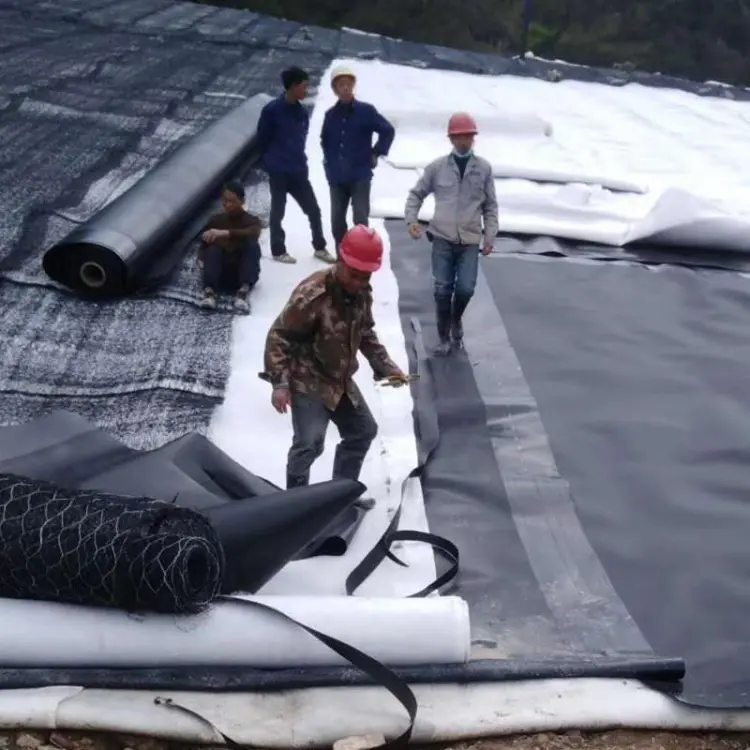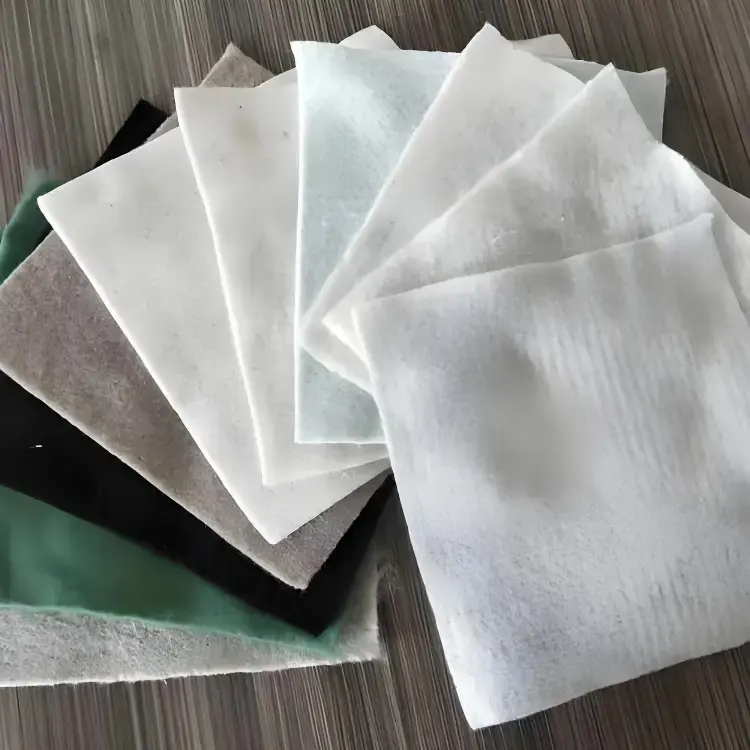● Tensile Strength
- HDPE: High tensile strength (≥30kN/m) for heavy-load applications
- PP: Moderate strength with cost efficiency
- PET: Superior strength-low elongation but alkaline vulnerability
● Durability & Chemical Resistance
| Material | UV Resistance | Chemical Stability |
|---|---|---|
| HDPE | ★★★★★ (50+ years with stabilizers) | Resists pH 2-12 environments |
| PP | ★★★☆☆ (Requires antioxidant additives) | Good acid/alkali tolerance |
| PET | ★★☆☆☆ (Hydrolysis risk in wet conditions) | Degrades in alkaline soils (pH>9) |
● Creep Resistance & Constructability
- HDPE: Minimal creep (<3% @ 20°C/10y), adaptable to complex terrains
- PP: Moderate creep, optimal for rapid deployment
- PET: High creep susceptibility, requires careful handling
Application-Specific Recommendations
▲ Heavy-Duty Infrastructure
HDPE preferred for:
- Bridge abutments & retaining walls (18% stability improvement documented)
- Coastal/industrial zones with corrosive elements
▲ Cost-Sensitive Projects
PP excels in:
- Roadbed reinforcement (15-30% aggregate reduction)
- Frozen ground applications (-60°C performance)
▲ Stability-Critical Applications
PET limited to:
- Asphalt overlay anti-cracking layers
- Short-term stabilization (avoid alkaline/moist environments)

Procurement Decision Framework
|| HDPE || PP || PET ||
|-|-|-|-|-|-|
| Load Requirement | Heavy | Medium | Medium-High |
| Environmental Risk | All conditions | Non-UV intense | Dry/neutral pH |
| Budget Priority | Premium | Economical | Mid-range |
| Installation Complexity | Low ★☆☆ | Low ★☆☆ | High ★★★ |
Key Specification Checkpoints:
- HDPE: Verify melt flow index (0.8-1.2g/10min) and carbon black content ≥2% for UV protection
- PP: Confirm antioxidant concentration (≥0.5%) for >20yr service life
- PET: Mandatory resin coating if groundwater pH>79
Performance Validation Data
- HDPE Stability Enhancement: 30-50% CBR improvement in embankments
- PP Cost Efficiency: 25% faster installation vs. alternatives
- PET Limitations: 40% strength loss after 5yr in humid alkaline soil
Engineering Advisory: Prioritize HDPE for permanent infrastructure in corrosive/UV-exposed sites (GB/T17689-2008 compliance), while PP offers optimal solutions for temporary works and frozen ground projects. PET requires rigorous environmental assessment before deployment.

